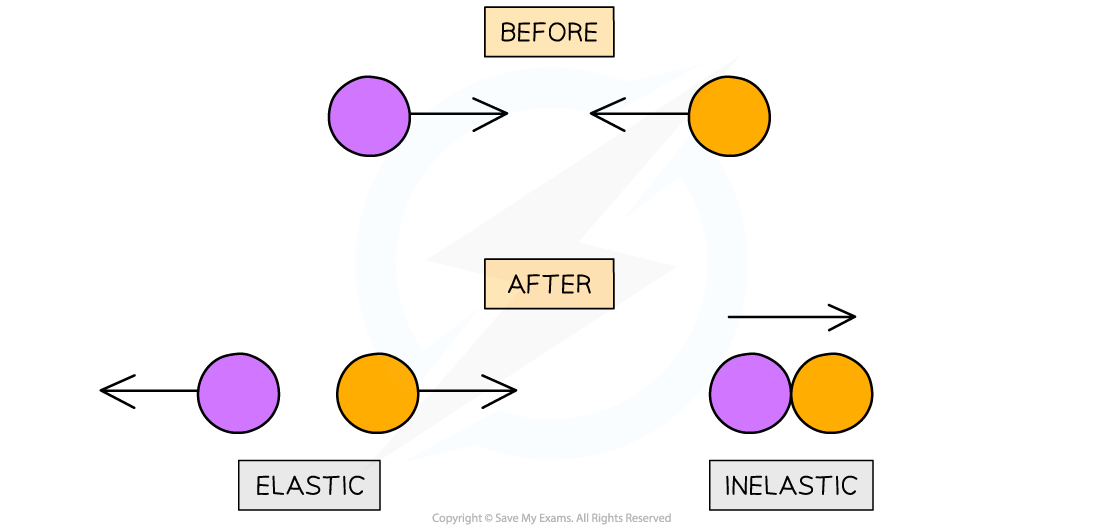Collisions (AQA GCSE Physics): Revision Note
Exam code: 8463
Collisions
Examples of momentum in an event are collisions
Objects will either:
Collide and move in opposite directions - this is an elastic colision
Collide and move in the same direction together - this is an inelastic collision
When the objects move in opposite directions:
Each object will have a different velocity depending on its mass and initial momentum of the system
When the objects move in the same direction together:
They will have a combined mass and velocity
Momentum is always conserved in a collision

Types of collisions
Examiner Tips and Tricks
If an exam question asks you to analyse a collision, follow these tips for full marks:
Always consider the motion before and after the collision and state:
The velocities of each object
The direction each object moves
State whether the collision was elastic or inelastic and explain your reasoning
In a perfectly elastic collision, the kinetic energy is the same before and after
In a perfectly inelastic collision, the two objects stick together after colliding
Describe any energy transfers that occur if kinetic energy is not conserved
For example, it may be converted into heat, sound, elastic potential energy etc
Calculations Involving Collisions
Calculations involving collisions use the conservation of momentum to determine the velocity of an object (or objects) before or after the collision
This means the momentum before the collision must equal the momentum after the collision for momentum to be conserved
Worked Example
An object of mass 1 kg is travelling at 3 m/s when it collides with a heavier object of mass 2 kg. The two objects stick together and travel off as one. Calculate the combined velocity of the objects after the collision.
Answer:
Step 1: Draw a diagram

Step 2: State the principle of conservation of momentum
The total momentum before a collision = The total momentum after a collision
Step 3: Calculate the momentum before the collision
Before the collision, only the 1 kg object has any momentum
pbefore = mv = 1 × 3 = 3 kg m/s
Step 3: Determine the momentum after the collision
The combined mass is now 1 + 2 = 3 kg
pafter = mv = 3 × v
Step 4: Substitute values into conservation equation
pbefore = pafter
3 = 3 × v
Step 5: Rearrange for the combined velocity v
v = 3 ÷ 3 = 1 m/s
Examiner Tips and Tricks
Always double-check the signs (positive or negative) for the velocity in your answers, as this is the most common type of calculation error!

Unlock more, it's free!
Did this page help you?